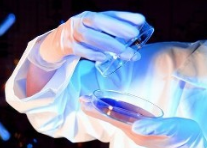

By pursuing its ambitious carbon management plan, R&D activities and press conferences, BASF is creating new possibilities for pioneering projects to reduce carbon dioxide in the future production process.
Climate protection and carbon dioxide neutral growth are the basis of BASF's new corporate strategic commitment. In order to achieve this goal by 2030, the German-based giant is constantly adjusting and optimizing existing processes to adapt to many challenges in a changing world. The company's goal is to gradually replace fossil fuels with renewable energy and low-emission production processes, and include them in an ambitious carbon management plan.
Therefore, BASF announced its* research results in these processes and some new, innovative and climate-friendly products at its research press conference in Ludwigshafen, Germany.
"New Technology"
Chemical reactions require energy, and fossil fuels are the source of carbon dioxide in the chemical industry. For example, BASF’s steam cracker requires a temperature of 850°C to decompose naphtha into olefins and aromatics. If this energy comes from renewable energy, carbon dioxide emissions can be reduced by 90%.
Martin Brudermüller, Chairman of the Executive Board of the BASF Division and *Technical Officer, said: "To achieve climate protection goals, carbon dioxide emissions must be reduced on a large scale. As a raw material, carbon dioxide is only suitable for specific applications, so such uses will not be Make a decisive contribution to climate change mitigation."
In the past few years, under different social needs, BASF has avoided a large amount of carbon dioxide emissions by optimizing production processes and efficiency. In fact, since 1990, BASF has reduced greenhouse gas emissions by 50% while doubling production.
Brudermuller added: "To achieve another substantial reduction in carbon dioxide emissions, brand-new technologies are needed, which is why BASF has launched an ambitious research and development plan."
Therefore, BASF's goal is to develop the world's first electric heating concept for steam cracking furnaces in the next five years. However, material testing will also be necessary to determine which metal materials can withstand high currents and which materials are suitable for high-temperature reactors.
The production of hydrogen also releases large amounts of carbon dioxide. The chemical industry uses large amounts of hydrogen as a reactant. For example, at BASF, it is used for ammonia synthesis. Hydrogen is also essential for many sustainable energy carriers and storage applications. Therefore, BASF is working with its partners to develop a new process technology for producing hydrogen from natural gas.
This technology can decompose natural gas into hydrogen and carbon components; for example, solid carbon residues can be used in steel or aluminum. This process requires that if renewable energy can be used, it is possible to produce hydrogen on an industrial scale without emitting carbon dioxide.
The development of new catalysts is critical to success.
Olefins are a particularly important area where BASF is committed to developing new low-emission processes. The large amount of carbon dioxide emissions generated by existing production methods can also be significantly reduced through the "dry reforming" of methane. This process produces a kind of "syngas", which is converted into olefins through an intermediate step of dimethyl ether.
BASF researchers can now find a way to do this for the first time, and a new generation of catalysts is being sold in cooperation with Linde. Depending on the supply of raw materials and renewable electricity, this innovative process can be used as a supplement or alternative to steam cracking electromechanical heating.
Committed to the cutting edge
The projects presented represent a unique combination of topics addressed by BASF's research activities. BASF's goal is to maintain its high expenditure and high standards in research and development. These expenditures reached 19 million euros in 2017, and the 2018 figures will be announced at the annual press conference in February.
BASF’s research projects include approximately 3,000 projects involving more than 11,000 employees worldwide. An important part of the proprietary technology is the cooperation network with universities, research institutions and companies.
Chitec (Shanghai) Technology Co.,Ltd. China Chemical Network
Telephone
Scan wechat
